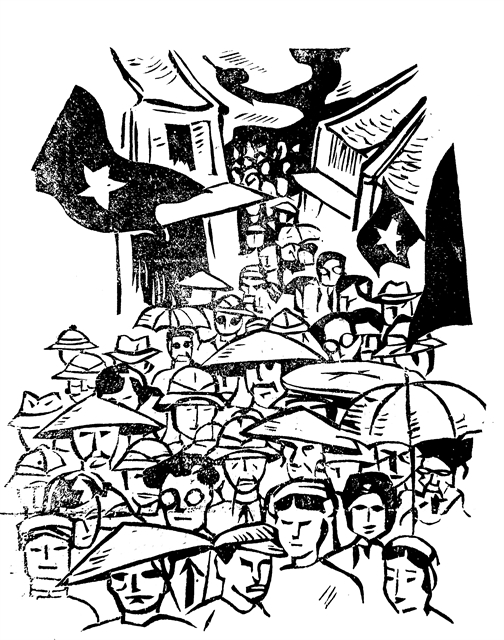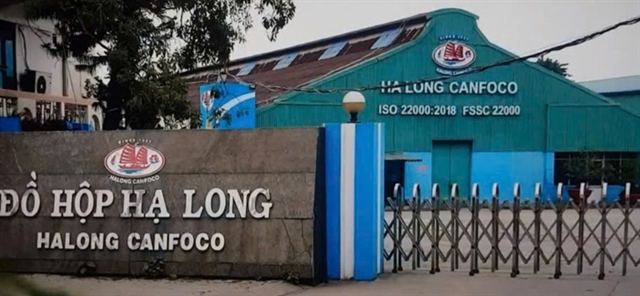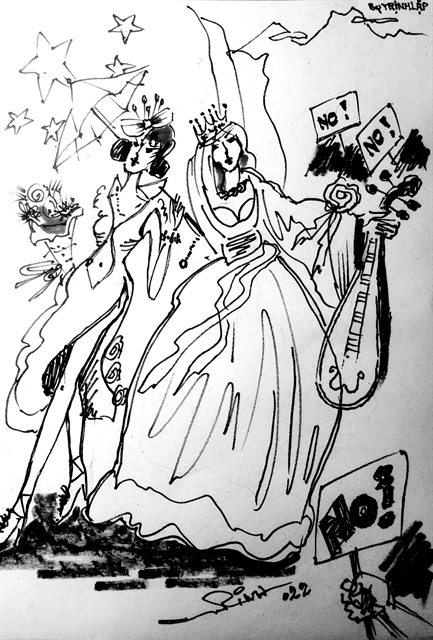 Talk Around Town
Talk Around Town

Many tourists to the northern town of Sa Pa in Lào Cai Province are trying out a 'new trend': dressing up as Tibetans for photoshoots. But some question the authenticity and viability of such an act.
By Lê Hương
Many tourists to the northern town of Sa Pa in Lào Cai Province are trying out a 'new trend': dressing up as Tibetans for photoshoots. But some question the authenticity and viability of such a practice.
Young couple Thào A Hoàng and Vũ Anh Thư have just taken their wedding photos in the Tibetan costumes and make-up. The photographs, taken at a tourism site in Sa Pa on a bright sunny day, stunned many netizens after being shared online.
“We both love Sa Pa’s scenery and have photos taken in various places here,” said Hoàng, who was born in Lào Cai.

|
| Illustration by Trịnh Lập |
Hoàng initially chose famed destinations as Cát Cát Village and Tiên Sa Streamline, where he wore the traditional costumes of the local Mông ethnic minority.
“I saw other young people taking photos in Tibetan costumes, and it looked so impressive,” said his wife, Thư. “So I decided to try.”
Thư was delighted with the photos.
“We took the photos on a bright day in an immense spectacular space of forests and mountains, together with a sea of clouds,” she said. “The Tibetan costumes are colourful, which are so suitable with the background, I think.”
Nguyễn Hồng Thu Trang, another visitor from Hà Nội, often visits Sa Pa where she searches for fresh images of the resort town.
She has also recently dressed in Tibetan costumes for photoshoots.
“This is not a costume of a Vietnamese ethnic group, but it suits the pristine romantic landscape of Sa Pa,” she said. “I wanted to experience a new image.”
Trang was also happy with her photo collection, from the make-up and costumes to the multiple shooting angles.
Due to the pandemic, Trang said she couldn’t visit Mongolia or China as she had planned for a long time.
“It’s a kind of cultural exchange activity, not anything repulsive,” she said of wearing a Tibetan dress for photoshoots.
Lan Phương, of Sa Pa origin, who initiated the service, said she and her team were happy, because many visitors had gone along with the idea.
Some places in Sa Pa have somehow similar weather and landscape as Tibet, so many visitors often dress up as Tibetan nomadic tribespeople.
“Their traditional costumes are so alluring,” Phương said. “That’s why I did a research and offered the service.
She has 12 sets of Tibetan costumes, which are always rented out. Visitors must book the service well in advance to have an outfit available to take photos.
Hoàng Trung Hiếu, a local photographer, who offers the same service, said that since October 2021, he had received many visitors, especially during the Lunar New Year, despite the harsh cold weather.
Hiếu bought the costumes from China and other accessories like feather hats, cloth shoes, arrows and bows, and bone necklaces.
Each set costs up to VNĐ3 million (US$130) but it can be rented for VNĐ400,000 for a photo session. The make-up ranges from VNĐ250,000-300,000, and there is a fee for taking the photos.
“I introduced the service in Hà Giang before,” Hiếu said. “In Sa Pa, I choose famous landmarks like the Best View Tourism Site, Sky Hill, Green Farm Garden, and other places on Ô Quý Hồ Pass, which all have pristine backgrounds,” he said. “In good weather, there is a sea of clouds.”
The photos of people in Tibetan costumes and make-up have been praised in some tourism groups. Many youths love the novel idea, but some have commented that it is ludicrous people donning traditional costumes of other countries when taking photos with Vietnamese landscapes in the background, and that wearing local ethnic costumes might be more fitting with the surroundings.
Cultural researcher Nguyễn Đức Bình noted that although the 'trend' had lured many visitors to Sa Pa and increased incomes for some locals, it was not necessarily appropriate or useful in the long-term.
“I think it’s the profit we can see in the short term,” he said. “But the practice is hardly suitable for upholding the identity of Vietnamese ethnic groups.”
He wondered if people would remember Sa Pa’s distinctive features if the photos were designed to evoke Tibet.
“I don’t think this 'trend' will benefit Sa Pa and its people in the long term,” he said.
Bình also expressed concern about Sa Pa’s urbanisation in the past few years.
“Hotels and resorts have mushroomed in a small area while hybrid sculptures of the Frozen Queen and Statue of Liberty have been erected at local tourism sites,” he said. “Sa Pa is now like a ‘mixed hotpot’ on display without a proper plan or vision for development.”
Cultural expert Vũ Minh Phương questioned why businesspeople did not use local ethnic features to enhance tourism.
“Instead of renting out Tibetan costumes for photoshoots, people can offer costumes of typical ethnic groups in Sa Pa like the Mông, Red Dao, Tày, Giáy and Xa Phó,” she said.
“When taking photos in Tibetan costumes, will visitors think of Sa Pa or Tibet? And when the 'trend' is over, will visitors have any reason to come back to Sa Pa?”
Phương said that the service only showed how people were running out of tourism ideas in Sa Pa, and pointed out that while global integration was inevitable, this should not mean the watering down of the country’s own cultures.
“We should not turn our pristine scenery into some exotic place,” she said. “Sa Pa will then have nothing but a pile of mixed up, worthless things.”
Speaking to a friend of mine recently, researcher Bình, who loves Sa Pa and visits once or twice a year, pointed out that each time he returned it felt stranger than the last.
“Behind the richer appearance, Sa Pa has lost its identity,” he said.
“I think it’s the local authorities' responsibility as they failed to release a development plan for tourism with a clear direction. Investors seem free to exploit and destroy nature and ethnic cultures. The price we pay for this free-and-easy approach will be costly.” VNS




